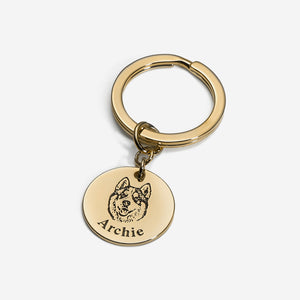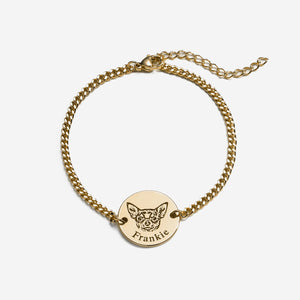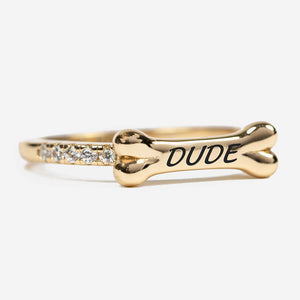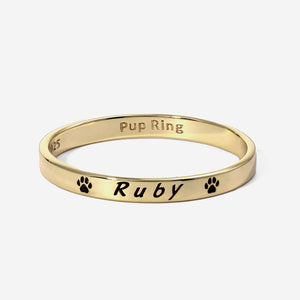Imagine this: you’re stuck inside, the dog parks and doggy daycares are closed, maybe you don’t have a yard, or you live in a super small space, like on a boat. There could be other situations where you aren’t able to take your dog outside. Your dog is quickly becoming bored, or sad, or destructive. Your dog needs an outlet, but you’re not sure what you can do.
I’m in the same boat you are! I work from home, I don’t know anyone in the area, and when I go outside I often encounter other dogs that are not leashed, and I worry about my dog’s safety in our neighborhood. I now also need to worry about being too close to other humans during this time. Other times I just don’t have the energy to go outside to give my dog the exercise he needs and deserves. My dog’s friends live several states away from us, and we’re really missing playdates right now. But what can we do about it?
Here is a list of 10 things you can do to wear out your dog during quarantine or any other time!
A pretty simple way to get some exercise together with your dog! Some people worry that playing tug with a dog will teach them to be aggressive. This really isn’t the case, although you will want to look for alternatives to tug if your dog already has aggressive tendencies or is a resource guarder. Play wrestling is a bit more on the line, but there are some ways to ensure it’s safe to do and that your dog understands the rules and what is acceptable behaviour.
Here are some tips to keep in mind while playing tug: 1. Play tug by starting the game yourself so you can set the ground rules. If your dog initiates a game of tug, they won’t necessarily understand the boundaries you set for the game. 2. If your dog’s mouth touches you, the game is over, and 3. Ensure your dog has a solid understanding of and response to “drop it”. If you play tug in a safe and healthy way, you’ll both have a great time!
If you choose to play wrestle with your dog, you’ll want to be a little more strict with your boundaries. Follow the rules above for games of tug. Have a very strong, very obvious signal that you are initiating a play wrestle session, and make sure that it’s not something anyone would do outside of an intentional play wrestle session. I sometimes like to play with my dog when I wake up in the morning, so I’ll sit on my bed and hold up a blanket or pillow in front of me, toss it around, jump around on my knees a few times, and generally act playful, being sure I don’t use any body language that someone who is afraid or defending themselves would use. This play signal goes on for a minute or so while he makes sure it’s really playtime. We only ever play wrestle on the bed and we play rolling around with pillows and blankets, so the chances of someone accidentally initiating a play wrestle session is seriously low.
Any time your dog puts something it shouldn’t in its mouth (fingers, arms, etc.) stop immediately. You can make a noise or say “ow”, and let your dog know that isn’t allowed because it hurts. Your dog will learn that play wrestling is just that- playtime, not a signal that you’re actually fighting or that nipping or mouthing is suddenly okay. When puppies play wrestle, this is how they learn the boundaries of how to play without hurting each other.
Finally, have a very strong signal that you are done playing. You will want your dog to really understand this so that if you find yourself in a situation where your dog is being too rough, you can stop it immediately, even with excitement and distractions. If your dog really doesn’t seem to understand the boundaries, avoid play wrestling until they have a strong understanding of what is and isn’t okay, or just avoid it altogether.
Any kind of obedience training is great for both you and your dog! Of course there’s always sit, stay, lay down, and others, but if you’ve already got the basics down you can move on to more challenging or fun tricks- think giving high-fives, or even teaching your dog to put away its own toys! These more complex tricks will take a lot of work, but they can be very rewarding for both you and your dog. You can find tons of detailed tutorials online about “shaping” complex behaviours that you want to teach your dog!
Hide and seek with your dog sounds pretty simple, and it’s a great opportunity to strengthen your dog’s recall ability. Start off hiding somewhere easy and call your dog. Give your dog lots of praise when it finds you! Slowly move on to more and more challenging hiding spots. Making a game out of it is not only fun for both of you, but you’ll also benefit from this later on in any situation where you need to call your dog. Having a strong recall for your dog can be especially important in situations that might be dangerous, and your dog will be more likely to pay attention to you, even with strong distractions present.
 A really useful trick is teaching your dog names: the names of toys will add depth to this game. If your dog doesn’t already understand what you mean when you say “toy”, do some basic training to teach it- hold the toy out, say “get your toy”, and make a big deal out of it when your pup investigates it! After your dog understands the basics, gradually go from leaving the toy out in the open to putting it behind or underneath objects, or in different rooms. If you want a more advanced game, start teaching your dog the individual name of each of its toys to really make it think!
A really useful trick is teaching your dog names: the names of toys will add depth to this game. If your dog doesn’t already understand what you mean when you say “toy”, do some basic training to teach it- hold the toy out, say “get your toy”, and make a big deal out of it when your pup investigates it! After your dog understands the basics, gradually go from leaving the toy out in the open to putting it behind or underneath objects, or in different rooms. If you want a more advanced game, start teaching your dog the individual name of each of its toys to really make it think!
“Find it” doesn’t only apply to toys, but you can teach your dog to do some interesting things when you start teaching names! I trained my dog to go find my cat. Here’s how- walk right next to and point to the thing or person you want your dog to associate with a command, and say it out loud (Where’s Tux?). Look for your dog to get interested in what you’re doing. I waited until my dog looked at Tux instead of me and did a treat and praise, then after a few times moved on to him touching Tux with a nose or paw (my cat and dog are buddies so he didn’t mind). After several successful executions of the command, I started trying it while Cookie was further away. This continued until we started practicing with Tux in a different room or behind an object. Now if I ever want to know where my cat is without looking by myself, I can just get my dog to find him instead! You can also use this to teach your dog the names of people. Instead of shouting across the house for someone, just send your dog over to fetch them!
*If at any point your dog gets confused or doesn’t seem to understand, it’s a sign you’re moving too fast. Try to go halfway back between steps. This is also a good way to approach any tricky training situation!
Pretty straightforward- if you have the space, in a long hallway or large room, just play fetch! You can toss or roll a toy and have your dog grab it. Like many other things on this list, you might need to teach your dog how to fetch or show him that you’re super excited when you toss a toy and he brings it back. Of course you might also need to teach “drop it” or they might run off with the toy instead of bringing it back! Another way to get the toy back is to just hold into it loosely until the dog gets bored and drops it for you to throw again.
Teaching your dog to use puzzle toys is a great way to keep them occupied and focused for a while! Some dogs will understand how to use the toy without much direction, and other dogs might need a little help figuring out how they work. Puzzle toys are a great way to really exercise your dog’s brain, and a good way to keep them busy. Just make sure you use a toy that is safe, correctly sized for the dog, and supervise your dog the first few times they use the toy.
Let’s take a step back from all the advanced training suggestions. For this one, you just put some obstacles throughout a room or your house and call your dog over from the other side. Make it as simple or difficult as you want, and tailor it to your dog’s skill and understanding of how to overcome the obstacles. It’s best to find a balance where your dog is only challenged a little bit- you don’t want your dog to get frustrated or give up, you want to make your dog think while still having a good time!
Just run around with your dog! As long as you’re not packed in your space like sardines in a can, even a little space can be sufficient. I just chase my dog up and down my tiny hallway, and he’ll dart past me, usually with a toy playing “keep away”! If you have stairs, lucky you! It will be really easy to get some cardio in alongside your dog.
If your dog has a lot of toys, and he can always play with anything he wants, that might get kind of boring! If you know the feeling of losing something for a while and finally finding it, you know just how much more exciting it is to have it again. You can try storing most of your dog’s toys and rotating them once in a while so they feel brand new every time they’re brought back out! A happy side effect of rotating your dog’s toys is that it also means fewer toys to pick up on a regular basis.

Simple enough! Just blow some bubbles and see if your dog is interested! You’ll be doing yourself a huge favor. Most homemade bubbles are fine to use, just make sure your dog doesn’t play with the bubble mix itself. If your dog doesn’t seem interested at first, point out the bubbles, get excited and try catching them yourself, and just act like you’re having the time of your life. Sooner or later they’ll think, “If hooman loves bubbles, bubbles must be pawsome!”
I actually had tried bubbles with my dog before, but he had no interest whatsoever. I decided to try again with the “excitement method”, and he ran into the other room to get Moose-toy (he knows what the name means) so he could play close to me. Not my goal, but super cute! He ended up catching a couple bubbles here and there between playing with Moose-toy and just watching me, but got bored when I paused to try to take a picture for the blog. He ended up wearing himself out pretty quickly!
In the end, doing anything at all and acting super excited will also get your dog excited for that thing! Get creative with what you can do in the space that you have, make sure you spend time playing with your dog, and you will both feel a lot better about being home together.







